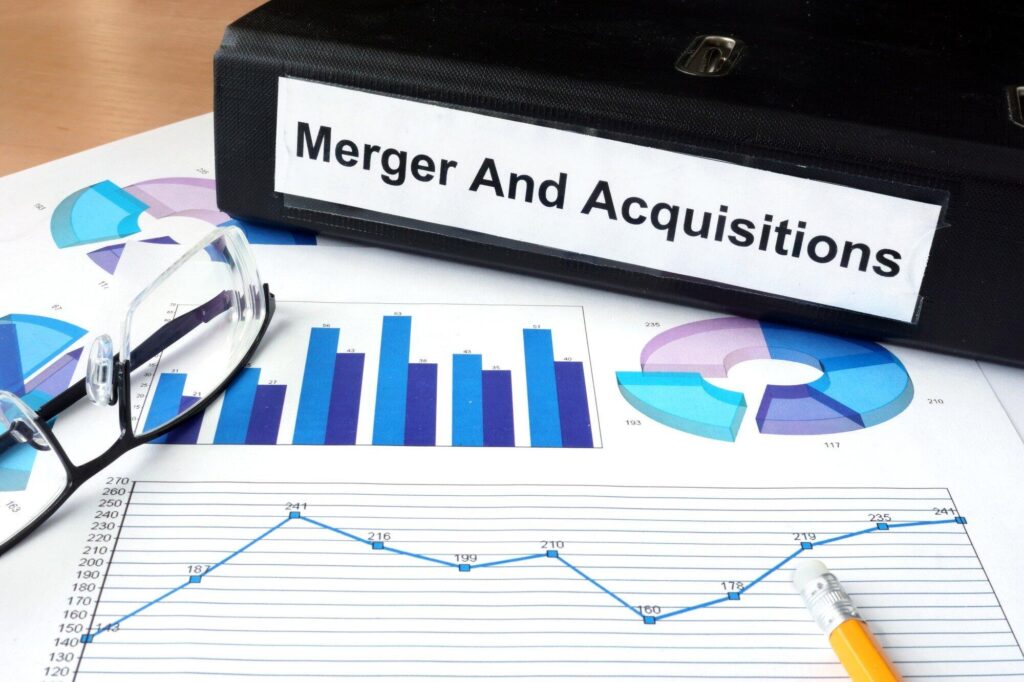
People tend to form their opinions quickly when acquisition headlines hit the news.
Is this acquisition a surprising move? Does it signal potential problems in the industry? Is it a sign that something groundbreaking could be just around the corner?
If you want to stop the chatter and gossip on WhatsApp or social media channels, you must get ahead with your acquisition press release. Here’s what to include.
1. The Headline
The headline of your press release sets the tone for the rest of the content. It can make or break the success of your news story, so you should always take time to get this one perfect.
The headline must capture the attention of the audience. You’ll need to use words that succinctly sum up your acquisition in an exciting and newsworthy way.
Someone unfamiliar with your company should be able to read that headline and understand that it’s significant, so think about how to word it with that in mind.
Remember that your press release is competing with many others, so you need some way of making it stand out.
2. A Subheadline
A subheadline for your business press release isn’t a must-have, but it is helpful because it can add weight to your headline. It can offer more detailed information, like dates and acquisition valuations, that you can’t fit in your headline.
It’s also helpful in conveying the key benefits of an acquisition. The reader uses the subheadline if the main headline has captured their interest.
It’s like a signpost on a door; it tells them more information before deciding to continue reading.
The sub-headline can also add some excitement to the press release, hinting at the nuances of the agreement and why it’s exciting for the industry or economy.
3. The Release Date
Each press release is an announcement, which means it’s time-sensitive. When you create a press release, you need to include a dateline. That outlines the city from which the press release was issued and the date of the release.
The date means journalists shouldn’t publish the information before that date and time. That’s important for sensitive information like acquisitions, which could impact the stock market.
The city is essential, too, because many of these press releases might have more chance of publication in local news stories. That’s especially true for things like acquisitions, which could impact local jobs.
4. The Introductory Paragraph
The introductory paragraph grabs your audience’s attention, excites them, and provides valuable information. It should tell the most important facts about your press release.
So when writing a press release, it’s helpful to format it by noting down your acquisitions’ who, what, when, where, and why.
In other words, if someone didn’t read further into the press release, they would still get the information they need from the introductory paragraph. It should also convey a message and tone about your situation.
That way, readers come away with an opinion about what your press release means and its significance to them, their industry, location, or company.
5. Add Some Relevant Quotes
When people read an acquisition press release, they want to know what others think about it. It helps shape their thoughts and feelings when reading through the entire article.
So, include one or two quotes in the press release. The best and most relevant quote should be near the beginning. You can add this to the introductory paragraph if you have room.
Choose quotes from people relevant to the press release and central to the news story. A CEO or other senior leadership person is ideal. You could also include an industry expert if possible.
Ask for a quote outlining the thinking and motivation behind the acquisition and the anticipated impact.
6. Acquisition Details
The press release is your opportunity to inform as many people as possible about your acquisition. So, you need to provide the details to answer their most pressing questions.
A good way of drafting this part of the press release is to write down a list of the most likely questions you’ll get about the acquisition. Write the answers and rewrite them into one or two concise paragraphs.
Use bullet points where possible to help highlight some of the critical facts. Remember to be as transparent as possible. It will help build trust with the reader.
7. Acquired Company Information
Give some essential facts about the acquired company. Talk about the company’s leadership and some of their most important achievements to date.
You could delve into their history and how they became an exciting company that made them the perfect acquisition.
Talk about what some of the acquired company’s stakeholders and employees think about the acquisition and their hopes for the future. You could also add another quote at this point.
8. Acquiring Company Background
Don’t forget that some people who will read your press release won’t know about your company.
Even if they have heard your company name, they might not have too much knowledge. So, you need to cover this in your press release to make it more relevant and exciting to your reader.
Provide information on when the company was founded and the size, including the number of employees. Talk about the industry and the products and services each company sells.
You should also discuss the company’s location, including regional offices. It’s also worth mentioning any other significant milestones achieved by each company before the acquisition.
9. The Motivation for the Acquisition
One of the biggest questions in the minds of your readers as they scan your press release is understanding why the acquisition happened.
They want to know the rationale. So, use part of your press release to answer this question. Talk about the strengths of both companies and the synergies you expect to realize through the acquisition.
Talk about the benefits to customers, employees, and benefits. And talk about how the company will bring together their joint resources.
It’s also worth mentioning some of the challenges you face with the acquisition and how you intend to overcome them.
10. Discuss Future Plans
One of the most intriguing parts of any acquisition press release is what will happen after the purchase.
You can answer this question by painting a captivating picture of how the new company will look and what it means to the industry. Talk about integrations and changes to products or services.
You could also discuss future market or global expansion if that’s relevant. Provide an overview of the company’s roadmap without giving away anything competitors could use to their advantage.
This press release section is also a good time to reassure employees who may worry about job security.
11. The Call to Action
All press release topics should have something at the end that helps people take the next step. But you first need to decide what you want people to do after reading your press release.
Perhaps you want them to go to your website. Or maybe you like to use it to make your brand more memorable and prestigious within your industry.
You may wish to invite journalists to contact you for an interview.
Whatever your motivation, use the call to action to make this happen. Be specific and tell the reader the steps they need to take. And make it concise, too.
12. Boilerplate
A boilerplate is a short paragraph that’s scannable for those wanting company facts. It’s usually provided at the end of a press release, and it’s a snapshot of the company.
It might summarize the information you mentioned earlier in the press release. But it will be in a more concise format. For example, it might include the date each company was founded, the size of the company, and the date of the acquisition.
People often use this information when writing other articles about your acquisition, so double-check it for accuracy.
13. Contact Information
Every press release needs to include contact details. That allows journalists and other interested parties to contact your press office for further questions.
You should offer a name, email address, and phone number. If you have an outsourced PR agency, you can include their details here instead.
It’s also worth including a website link that will take the reader to a factsheet with more information about the acquisition.
In the contact section, explain what information you wish to field via phone or email. For example, if you are happy to give interviews, mention that and outline how a journalist can request an interview.
The contact information is also there for people to ask follow-up questions. So make sure the contact point is someone with in-depth information about your acquisition who can answer any question on the topic.
Creating an Acquisition Press Release With Impact
You have one opportunity to get your acquisition press release perfect. If you do that, it could profoundly affect your business, helping to improve your brand image and industry reputation.
eReleases is the most popular way to get started with PR. We have an extensive and exclusive database, and we’ve made press releases easy. Find out more about what other companies have achieved via eReleases.
